A Brief Rigging Glossary: Basic Industry Terms You Should Know
Understanding common lifting and rigging terms can be critical to the success of planning and executing an overhead lift. Use this rigging glossary to learn more about some of the basic and common terms you might hear on the job.
Rigging is a complex practice that’s used across many industries including mining, construction, steel, automotive, and shipping, to name a few. When it comes to rigging, there are a lot of terms that those familiar with it will use regularly.
Perhaps, you’re in a role where you’re purchasing rigging equipment for your company, but not necessarily doing much of the work on the ground. Or maybe, you’ve recently assumed a new role in a rigging-related industry. Either way, you probably need to understand some basic rigging lingo in order to do your job.
If you’re new to rigging, it can be difficult to confidently talk or read about anything rigging-related without stumbling every few words. While there’s an endless list of increasingly complex terms associated with rigging, understanding some of the most common ones may help to get you started. That’s why we’ve written this rigging glossary.
The goal of this article is to list and define some of the most basic, common terms someone new to rigging may need help understanding. In this brief glossary, you’ll find a list of rigging terms and definitions related to:
- Governing bodies and standards
- Rigging personnel
- Other rigging terms
Governing Bodies and Standards
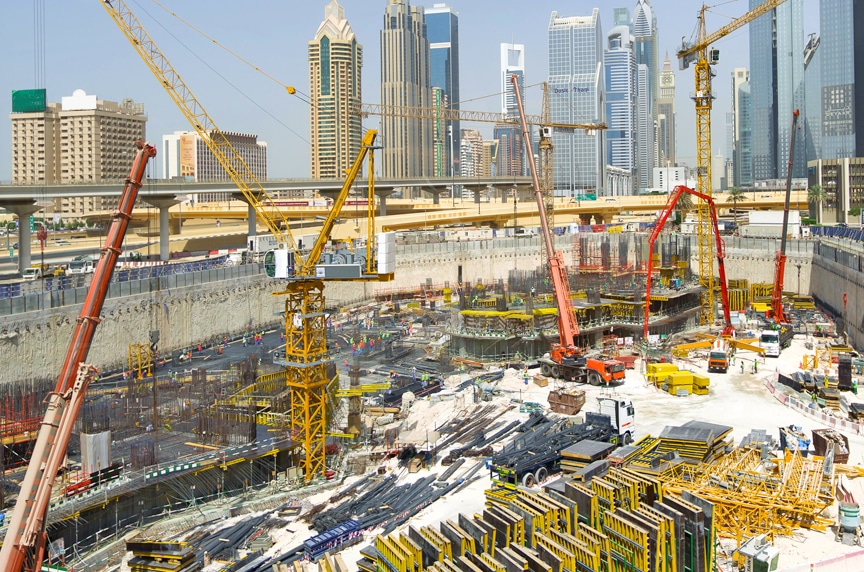
It’s important to be aware of the different organizations that put forth rules and guidelines that are applicable to your facility and personnel. The recommendations and standards published by these organizations may be applicable to rigging, related industries, or specific equipment you are using.
OSHA – This stands for Occupational Safety and Health Administration, which publishes federal standards and general safety requirements for a wide range of industries. Their rules are enforced through fines and penalties.
ASME – This stands for American Society of Mechanical Engineers. This organization publishes more detailed / current standards than OSHA. Often referenced by OSHA.
ANSI – This stands for the American National Standards Institutes. ANSI is a private organization that works within practically every industry to provide a general framework for fair standards development and quality conformity assessment systems.
Manufacturers Recommendations – Specific information on the use, care, inspection and maintenance of the product developed by the actual manufacturer. Often referenced by OSHA.
Company Rules and Guidelines – Safety rules developed by your employer specific to their needs.
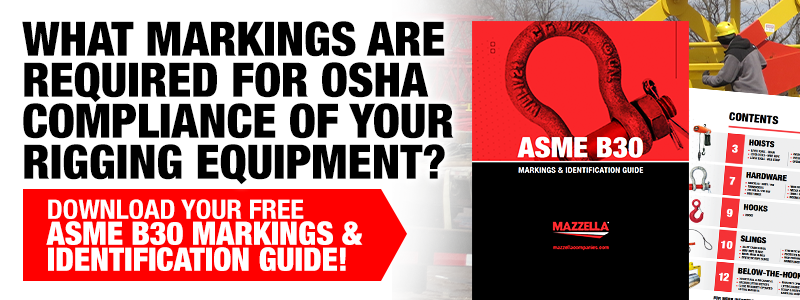
Rigging Personnel
Rigging is a complex process that requires a certain level of knowledge and experience to perform safely and correctly. As such, there are different levels of personnel responsibility determined by their proven ability to handle certain tasks. It’s important to understand the difference between these types of rigging personnel in order to keep track of who in your facility is prepared to handle specific duties.
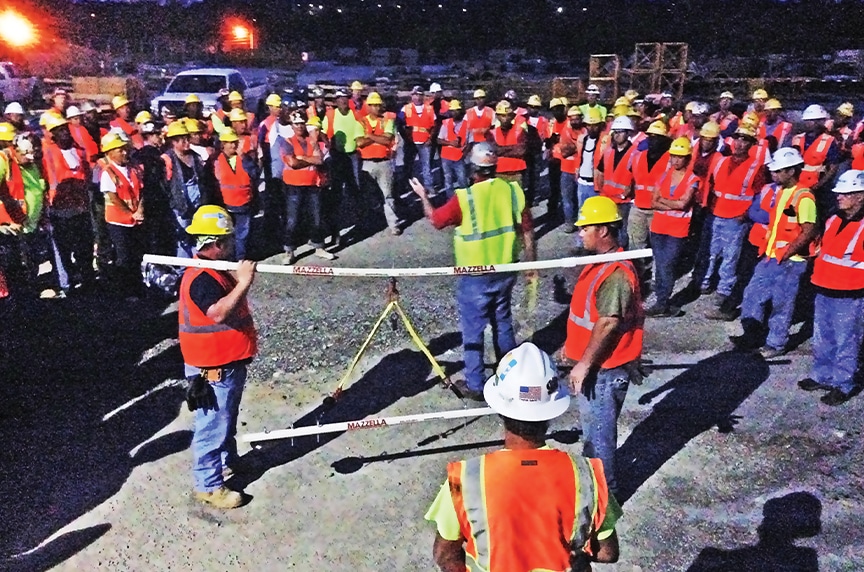
Designated Person – A person who is selected or assigned by the employer or the employee’s representative as being qualified to perform specific duties.
Competent Person – By way of training and/or experience, this person is knowledgeable of applicable standards, is capable of identifying workplace hazards relating to the specific operation and has the authority to correct them.
Certified Person – While OSHA does not provide an official definition of this, dictionary.com defines it as “Having or proved by certificate; guaranteed; reliably endorsed.” A good rule of thumb is to train your employees on what they need to know to keep themselves and others safe on the job site. The employer should determine whether a certain type of certification will assure a well-trained workforce and a safe work site for their employees.
Qualified Person – Per ASME, a person who by possession of a recognized degree or certificate of professional standing in an applicable field, or who, by extensive knowledge, training, and experience, has successfully demonstrated the ability to solve or resolve problems relating to the subject matter and work.
Qualified Rigger – A rigger who meets the criteria for a qualified person.
Other Rigging Terms
In addition to the terms regarding governing bodies and personnel, there are also a lot of other miscellaneous rigging terms you will hear when it comes to equipment and rigging a lift. While this doesn’t even come close to covering all rigging terminology, these are some of the most common, basic terms that will be relevant to almost every lift.
Rigging (verb) – The act of using equipment or gear to lift and support a load.
Rigging (noun) – The equipment or gear used to lift or support a load.
Working Load Limit (WLL) – The maximum load or force which the product is authorized to support. Also referred to as rated load or capacity.
Design Factor – The ratio between the designed breaking load of a sling or piece of equipment and the working load limit. Generally expressed as a ratio, e.g. 5 to 1.
Proof Test – A nondestructive tension test of a piece of equipment, device, sling, or components.
Proof Load – The specific load applied in the performance of a proof test.
Load Test (Below-the-Hook Lifting Devices) – A test applied to new or refurbished below-the-hook lifting devices to ensure that the device’s rated load is accurate. The load rating should not be more than 80% of the maximum load sustained during the test. The test shall not be more than 125% of the rated load unless otherwise recommended by the manufacturer.
Ultimate Strength -The average load or force at which the product fails or no longer supports the load. Also referred to as ultimate load.
Static Load – The load resulting from a constant applied forced or load; A load that is lifted and unmoving.
Shock Load – A force that results from the rapid application of a force (such as impacting or jerking) or rapid movement of a static load—a shock load significantly adds to the static load; a momentary increase in the force applied to lifting and/or load handling components caused by the sudden movement, shifting, or arresting of the load.
Center of Gravity (COG) – The COG is the point at which weight is evenly dispersed and all sides are in balance. In order to properly rig the load, the COG should be directly below the load hook and the connection points should be above the COG.
Fatigue – This is defined as weakness in materials, especially metal, caused by repeated variations of stress. Rigging equipment made of metal material—wire rope, chain, shackles, etc.—is vulnerable to becoming fatigued. Rigging equipment that becomes fatigued may lose some, or all, functionality.
Wrapping It Up
We don’t expect to teach you everything you need to know about rigging in just a brief glossary, but everyone has to start somewhere. We hope that this article helps you to feel more comfortable discussing and understanding rigging and its related terms.
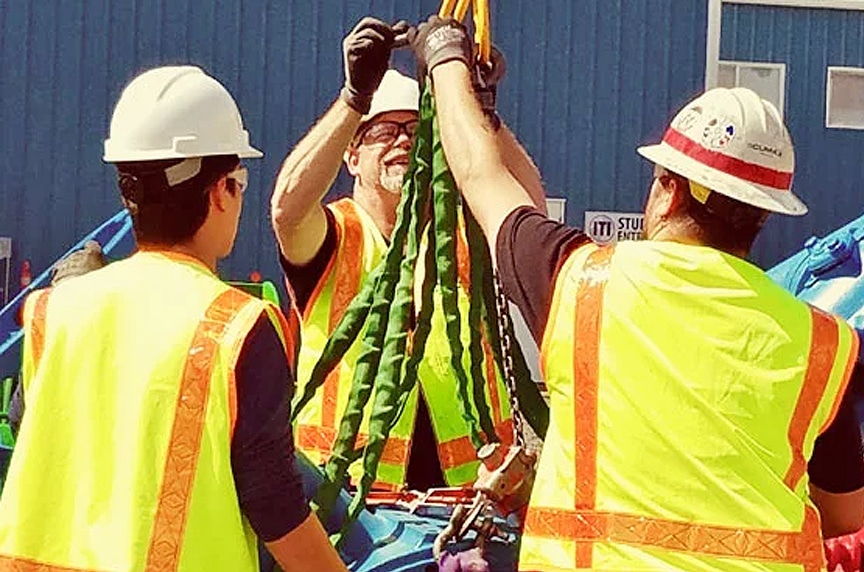
At Mazzella, we offer a full inventory of lifting and rigging solutions. Our extensive sales staff is ready to work with you to find the right rigging solution for your business or answer any questions you may have to get started.
If you’re interested in learning more or scheduling a consultation for your next lifting project, contact one of our lifting specialists today.
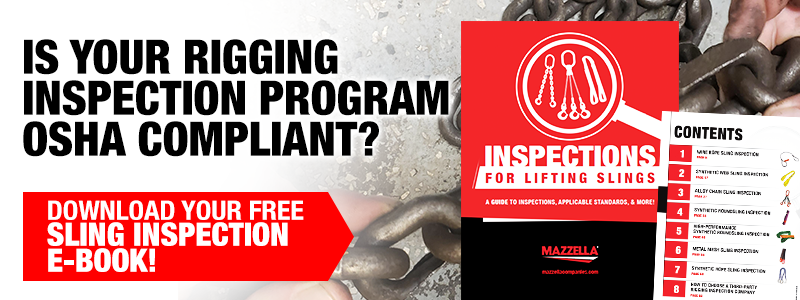

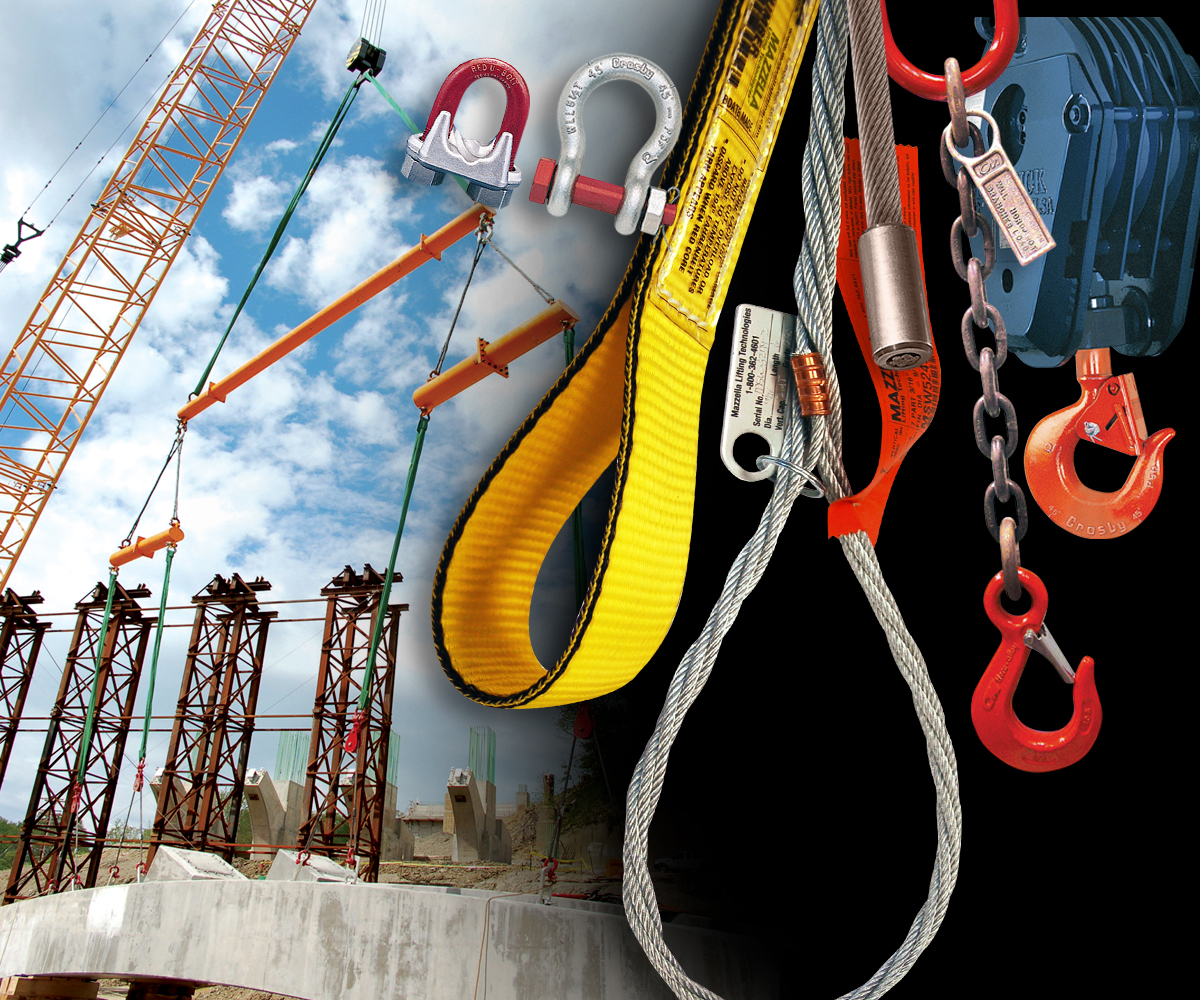
Lifting & Rigging Products
Are you looking for lifting and rigging products that you can trust for your next project? We partner with the largest manufacturers in the world to stock and provide you with the products you need to make your next lift, including all types of lifting slings, rigging hardware products, wire rope, hoists, hoist parts, pullers, and other related distributed products.
Contact us today to get the lifting and rigging products you need!
Learn more about our selection of lifting and rigging products!
Copyright 2020. Mazzella Companies.
